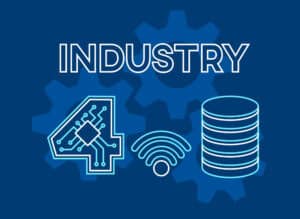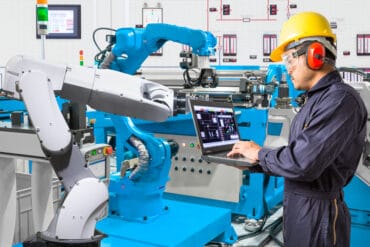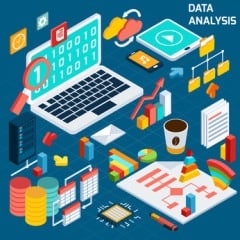
The transition to Industry 4.0 is powered by technology that enables smarter, interconnected environments. Data connectivity and IoT platforms are central to these environments.
Industry 4.0 is revolutionizing industries by integrating advanced digital technologies into core business operations, fostering intelligent, interconnected systems that enhance efficiency and reduce costs. Smart operations have widespread benefits, and highlights of this shift include essential technologies like data connectivity and IoT platforms. Companies need a roadmap for adopting these innovations across various sectors—from process planning to execution. Let’s explore how businesses in any industry can leverage the transformative power of Industry 4.0, driving significant improvements in productivity and sustainability.
The Benefits and Synergies of Intelligent Operations
The advent of Industry 4.0 technologies has streamlined operations and created synergies that transform traditional business models across various industries. Here are some key benefits:
- Enhanced Operational Efficiency: Automates complex processes, reducing manual intervention. Predictive maintenance algorithms forecast equipment failures, minimizing downtime and maintenance costs.
- Improved Decision Making: Real-time data enables quick, informed decision-making. IoT platforms provide a comprehensive view of operations, optimizing production and enhancing product quality.
- Cost Reduction: Streamlines resource management and minimizes waste, significantly lowering operational costs. Advanced analytics optimize energy and material use.
- Enhanced Customer Experience: Swift responses to customer needs and market changes improve service delivery and satisfaction. Real-time inventory tracking ensures faster product availability and delivery.
- Synergy Between Digital and Physical Assets: Integrates digital planning with physical execution for improved accuracy and operational agility.
- Sustainability: Promotes efficient use of resources, reducing environmental impact, and helping meet sustainability goals.
See also: The Evolution of Manufacturing in the IoT Era
Core Technologies Driving Intelligent Operations
The transition to Industry 4.0 is powered by technology that enables smarter, interconnected environments. Data connectivity and IoT platforms are central to these environments.
Data Connectivity: The Lifeline of Intelligent Operations
Data connectivity enables seamless communication across industrial systems, allowing real-time data flow and immediate operational adjustments. This connectivity gives companies finer control over each step of a process and speeds iterations for small, consistent improvements that add up over time. Key applications include:
- Real-Time Monitoring: Sensors on machines transmit data to systems that immediately analyze and respond, maintaining continuous production.
- Remote Operations: Enhanced connectivity allows operations to be managed remotely, increasing safety and efficiency in challenging environments.
IoT Platforms: Harnessing Data for Smart Decision Making
IoT platforms integrate data from connected devices, providing analytics and actionable insights. They play a critical role in:
- Predictive Maintenance: By analyzing data trends, IoT platforms notify maintenance teams proactively, avoiding downtime and extending equipment life.
- Supply Chain Optimization: IoT data helps optimize inventory and delivery times, streamline supply chains, and reduce costs.
- Energy Management: IoT systems manage energy use efficiently, monitoring consumption and automating adjustments to minimize costs and environmental impact.
A Roadmap to Intelligent Manufacturing
Adopting intelligent manufacturing involves strategic planning and execution. However, with a clear process, organizations can navigate the transition, leveraging digital tools and data analytics at every stage. Here’s how a hypothetical company might navigate this transformation:
Step 1: Process Planning with Intelligent Tools
A company begins by implementing digital twins and simulation software to design its manufacturing processes. These intelligent tools allow the company to create virtual models of production lines. By testing various operational scenarios virtually, the company can optimize workflows for efficiency and minimal resource use, setting a robust foundation for real operations.
Step 2: Process Validation through Digital Technologies
With a theoretical optimal process in place, the next step involves validating these processes using the same digital tools. The company tests the virtual models under various simulated conditions to ensure that the processes perform as expected in the real world. This digital validation step is vital for identifying potential bottlenecks and quality issues, allowing adjustments without the high costs associated with physical trials.
Step 3: Production Planning Optimized by Data-Driven Insights
Once the processes are validated, the company optimizes its production planning. Utilizing data analytics, it forecasts demand and adjusts production schedules accordingly. This step leverages real-time data from market trends and internal metrics to allocate resources efficiently, thus ensuring that production volumes are perfectly synchronized with market needs and minimizing excess inventory.
Step 4: Production Execution with Real-Time Monitoring
Finally, the company implements real-time monitoring systems during production execution. Sensors and IoT devices are integrated throughout the manufacturing plant to continuously collect data on production activities. This real-time data allows the company to monitor and adjust operations instantaneously, ensuring that each product meets quality standards and production remains on schedule. Automated systems can also respond dynamically to deviations or disruptions, maintaining operational efficiency and high product quality.
Navigating Challenges and Embracing Industry 4.0
As organizations step toward the future with Industry 4.0, understanding and addressing the associated challenges is crucial for a successful transition. Here’s a deeper look at these challenges and how businesses can navigate them effectively.
Cultural Change within Organizations
One of the foremost challenges is the cultural shift required within organizations. Industry 4.0 not only changes operational processes but also demands a new mindset from all levels of staff. Embracing continuous innovation and learning is essential. Leaders must champion this transformation, promoting agility and flexibility, and encouraging an environment where digital literacy and data-driven decision-making are at the forefront.
Ensuring Data Security
As operations become more interconnected through the adoption of IoT and cloud technologies, securing sensitive data against breaches becomes increasingly complex. Companies must implement state-of-the-art cybersecurity measures, continually update their security protocols, and ensure all staff are trained in recognizing and preventing security threats.
Integration with Existing Processes
Integrating new technologies with existing processes poses significant technical challenges. Organizations must ensure that legacy systems can communicate effectively with new digital tools, which may require substantial upgrades or even complete overhauls of current systems.
Advancing Into Industry 4.0
Adopting Industry 4.0 significantly enhances efficiency, product quality, and customer responsiveness. Despite challenges like cultural adaptation within organizations and the need for advanced cybersecurity, these obstacles offer avenues for growth and improvement. Businesses are encouraged to view these challenges as essential steps toward modernizing their operations and securing a competitive advantage.











